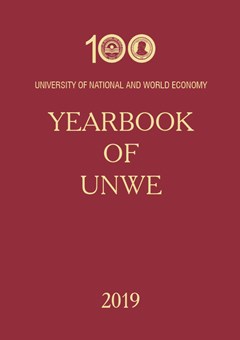State Capture: From Theory to Piloting a Measurement Methodology
State Capture: From Theory to Piloting a Measurement Methodology
Author(s): Alexander Stoyanov, Alexander GerganovSubject(s): Politics / Political Sciences, Social Sciences, Political Theory, Sociology, Politics and society, Social Theory, Management and complex organizations, Sociology of Politics, Corruption - Transparency - Anti-Corruption
Published by: Университет за национално и световно стопанство (УНСС)
Keywords: state capture; corruption; corruption definitions; forms of corruption; abuse of power; collective actor
Summary/Abstract: The objective of this paper is to present a method to measure and quantitatively assess the prevalence of state capture. This phenomenon refers to the emergence of private interests which, in the course of modernization and growth tend to become dominant (in a sector, in the economy or globally). The assessment of this phenomenon is controversial and depends on the dominant perceptions of norm and deviation from the norm embedded in laws and regulations. In the context of the European civilizational model, and the Weberian state ideal, the norm postulates that all interests and actors should be regarded equal and no specific privileges should exist. The paper is based on the idea that the functional nature of the capture process (the acquisition of privileged status) can be achieved not only by influencing the adoption of regulations and rules but also through other mechanisms. At a general level, state capture could be described as virtual privatization of the state functions which ensures a systemic privilege for captors. Depending on who the captors are (business, government officials, parties, politicians, etc.) capture could include combinations of multiple base mechanisms. The concrete state capture assessment methodology used focuses exclusively on business capture and includes three groups indicators of state capture: business capture pressure assessment, institutional enablers, environmental enablers. This theoretical structure has been tested using factor analysis. Pilot test data from five countries have been merged to produce 1605 different institutional assessments. The factor analysis generally confirms the initial theoretical assumptions about the structure of indicators necessary to assess state capture vulnerabilities.
Journal: Годишник на УНСС
- Issue Year: 2019
- Issue No: 1
- Page Range: 19-46
- Page Count: 28
- Language: English

